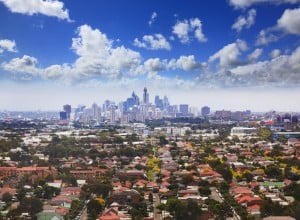Gosford has taken out the No.1 spot in RiskWise’s 2020 list of Top 10 Danger Zones.
The NSW suburb topped the list due to a number of factors including the recent bushfire risk, oversupply of units (at more than 72 per cent of existing stock) and that units unsuitable for families were not in high demand. 
It is hard to convince prospective buyers that this is the best investment they can make when there are plenty of other options available.
Another at-risk area is the suburb of Mascot with 1,061 units in the pipeline, at an addition of 17.67% to existing stock, and where news of the construction defects impacted the entire suburb.
Areas outside of Sydney and Melbourne, such as Darwin, experienced overall weakness in the property market due to low population growth (the Northern Territory was the only state in Australia that experienced population loss in 2017-18).
Darwin units delivered -33.7 per cent capital growth over the last five years.”
| State | Postcode | Suburb | New units next 24 months | New units as % of existing stock |
| NSW | 2250 | Gosford | 1,851 | 72.47% |
| NSW | 2020 | Mascot | 1,061 | 17.67% |
| NSW | 2155 | Rouse Hill | 1,183 | 149.75% |
| NT | 0800 | Darwin | 1,042 | 26.99% |
| QLD | 4217 | Surfers Paradise | 3,891 | 19.46% |
| QLD | 4006 | Fortitude Valley | 1,390 | 26.56% |
| SA | 5000 | Adelaide | 1,984 | 20.03% |
| VIC | 3168 | Clayton | 1,097 | 23.97% |
| VIC | 3008 | Docklands | 2,435 | 22.30% |
| VIC | 3128 | Box Hill | 1,167 | 20.41% |
While apartment prices in Sydney and Melbourne were enjoying price rises, this was not the case in high-supply areas.
The best case scenario in these areas is they are simply underperforming the market, but the worst case scenario is they are actually losing money.
For example, while Domain’s latest House Price Report shows in the 2019 December quarter prices rose 4.3 per cent, this was not the case in suburbs with high oversupply and particularly those affected by construction defects, such as Mascot where prices fell 4.6 per cent to $880,000.
In Homebush West, where the Centenary Park building is located, prices also fell 9.3 per cent to $565,000.
These areas not only have the risk of being in the Danger Zone due to oversupply but also construction defect risk.
For example, the number of apartment sales in Sydney Olympic Park fall dramatically by 75 per cent following the defects identified in Opal Tower with buyers showing little interest for apartments across the suburb.
What we are seeing is that new units in high-supply suburbs either resulted in a loss or underperformed the market, even during periods of strong price increases.
The recent downturn is not the major factor in those losses – even ignoring the recent downturn and then recovery, they are still materially underperforming the market.
According to analysis by BIS Oxford Economics in April last year, two-thirds of Melbourne apartments sold off the plan during the eight-year period between 2011 and 2019 either made no price gains or lost money on resale.
In Brisbane, this figure was 50 per cent and in Sydney about a quarter.
Figures from the Real Estate Institute of Australia also show the Brisbane unit market continued to underperform in 2019, resulting in negative 1.2 per cent growth.
HIA figures showed building approvals in the 2019 calendar year were 18.5 per cent lower compared to 2018.
This is well below their peak indicating the demand for off-the-plan units has reduced. 
The expectation was that over time, and with the reduction in dwellings under construction, the stock would be absorbed.
However, we have recently seen an increase in high-rise dwelling approvals and the risk of losses from buying off-the-plan is increasing.
The point is the risks are very tangible, they have been realised and we have witnessed major price reductions in a number of areas with oversupply.
It should be noted that even in phenomenal boomtimes, based on that eight-year perspective, when you buy off-the-plan apartments in high-supply areas there is a greater risk, and the construction defects only compound this.
It is not only financial risk but also the newly emerging construction risk.
Finally, the potential re-introduction of credit restrictions by the regulator would likely have a material impact on investors, generally are the majority of new apartment buyers in those areas, and further increases the potential risk of low demand and underperformance of these investments.
The major objective of investors is to build equity and in the current market conditions the most effective way to do so is to simply invest in existing properties that are suitable for families in high-demand areas.
from Property UpdateProperty Update https://propertyupdate.com.au/top-10-danger-zones-for-2020-2/


No comments:
Post a Comment